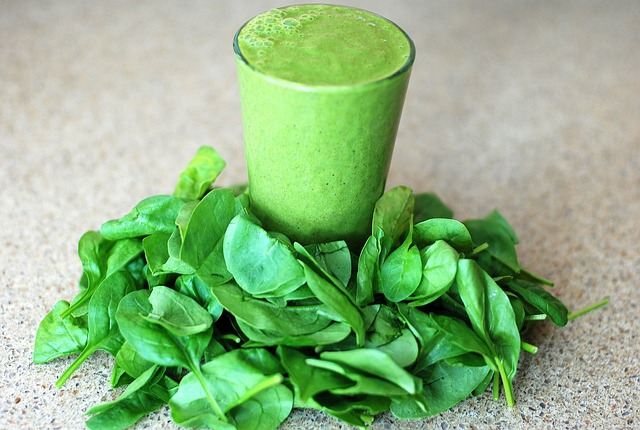
If we can’t trust TikTok influencers for health advice, then who can we really trust?
Leave it to TikTok to take an otherwise healthy food product – green leafy vegetables – and invent something that’s not even healthy. A trend that has been circulating for some time on TikTok is that chlorophyll, extracted from plants, has near-magical properties. Acne, bloating, and body odour disappear, replaced with flat stomachs and clear skin. While claims related to chlorophyll have been circulating for years, these types of trends are massively influenced by virality on social media. And TikTok (for now, at least) is one of the biggest platforms out there. With stores reporting that they have completely sold out of chlorophyll supplements, perhaps it’s time to take a closer look at what your teenager might be asking you to buy.
What is chlorophyll, anyway?
Chlorophyll is a group of pigments that share remarkable properties, and are arguably critical to life on earth. Beyond giving plants their green colour, chlorophyll is a critical component of photosynthesis, allowing plants to capture light energy from the sun and convert it to chemical energy. If you’ve forgotten much of your grade 10 biology (like I have), chlorophyll absorbs light absorb light and create ATP and NADPH. Plants can then converts carbon dioxide and water into glucose, while producing oxygen. That glucose powers the cell.
There are five main types of chlorophylls, but two (chlorophyll a and chlorophyll b) are the main ones involved in photosynthesis. Structurally they have a long tail and a ring (surrounding an ion of magnesium) that absorbs the light.

Chlorophyll A. Public domain image.
The nutrition of chlorophyll
Let’s say you’ve decided to take chlorophyll supplements. These probably contain chlorophyllin, which is a semi-synthetic and more stable derivative of chlorophyll. With chlorphyllin, the magnesium ion (see above) is replaced with another cation, usually copper. Or, you’ve simply decided to eat a salad of leafy greens.
If you’re eating plant-based sources, the chlorophyll will be liberated from the plant cells and distributed in the gastrointestinal tract. Chlorophyll is not soluble in water, and from what I could find, it’s not clear that it is even absorbed intact from the gastrointestinal tract. While we do know a diet rich in green leafy vegetables is healthy, there is no evidence that attributes this benefit solely or even partially to chlorophyll. It could be the fibre, potassium, magnesium, vitamins, or other components in these foods.
If you’re taking supplements, chlorphyllin is water soluble and more easily absorbed, compared to chlorophyll. It’s not clear if the product is absorbed intact but there is evidence that components of the molecule (i.e., copper) are absorbed.
Is there a role for chlorophyll as a supplement?
So let’s take a closer at clinical trials that have looked at the benefits of consuming chlorophyll or chlorophyllin. This will be a short section. Despite the popularity, evidence is lacking and unconvincing. While chlorophyll has been touted as a treatment for acne, allergies, odours (colostomy, halitosis, body odour etc.) and skin conditions including wounds, non-melanoma cancer and herpes zoster, there is no evidence to demonstrate that chlorophyll is effective for any of these conditions. There are very few clinical trials published that have studied chlorophyll supplementation (as food or otherwise) for effects in humans.
There is even less data for chlorophyllin, which is what a supplement will likely contain. The best evidence for its use is as a colouring agent, when present in limited quantities in food. When used topically, for conditions like acne, the evidence is not convincing that chlorophyllin provides any meaningful benefits.
Possible health concerns
Chlorophyll, when consumed as a component of food products, is safe to eat. There is little to no safety information on the use of high dose isolated/purified forms of chlorophyll when consumed, injected or used topically. Chlorophyllin supplements may contain copper in concentration at about 4%. When used as a colouring agent, there are no health risks with use. There is insufficient data on the absorption of chlorophyllin supplements, but there is evidence that it can raise copper levels. Supplementation can cause green discoloration of the urine or stool, as well as tongue discolouration. Given long-term consumption of high levels of copper is associated with health risks, there may be risks with long-term use of chlorophyllin – especially in children. There is no safety information on the use of supplements while pregnant or when breastfeeding.
The best source of chlorophyll
If you’re adamant about boosting your chlorophyll intake, the most “natural” way of all would be to skip the supplements and go directly for its primary source: food. Chlorophyll supplements are not cheap, and given the evidence and potential for side effects, that money is better spent on food. A diet that is rich in chlorophyll-containing foods is likely going to be a healthy diet.

